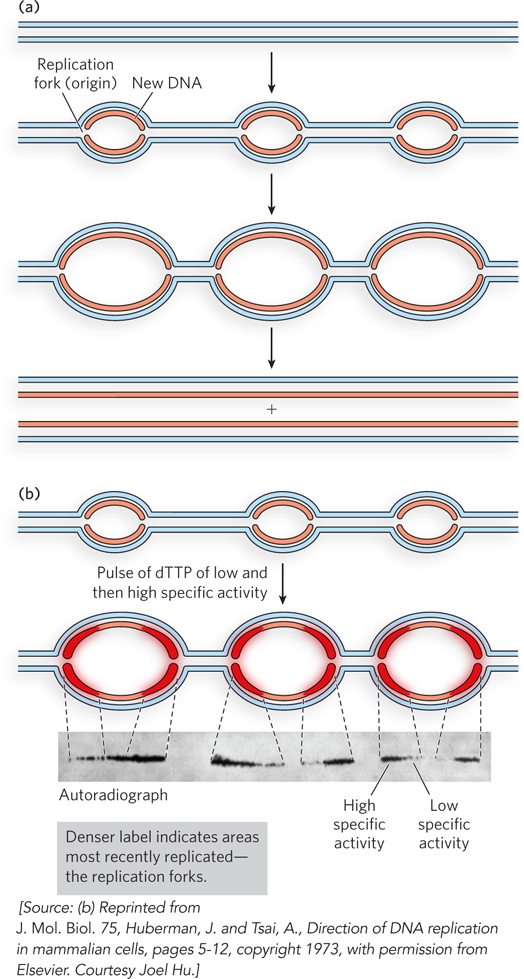
Multiple eukaryotic replication forks. (a) In eukaryotes, bidirectional replication forks from multiple origins form replication bubbles that expand and meet head- on to produce two new linear duplex chromosomes. Parental DNA is blue; newly replicated DNA is red. (b) Chinese hamster ovary cells were labeled with two pulses of [3H]dTTP, first of low radioactivity, then high radioactivity. DNA was then extracted and imaged by autoradiography. The image shows the newly replicated, 3H- labeled DNA initiated at multiple origins. Increased density of radioactivity at both ends of a bubble, at the replication forks, reveals that each new DNA strand is growing away from the midpoint and thus that replication is bidirectional. Replication forks had formed prior to addition of [3H]dTTP, so the new DNA is not completely radioactive along its entire length (the DNA closest to the origin is not labeled). On addition of [3H]dTTP, the new DNA becomes labeled. The label intensity increases at each forked junction because of the increase in specific activity of the label during the experiment. Therefore, the taper of the signal in the autoradiograph reveals that the direction of fork movement is bidirectional, away from the midpoint (origin) between two sets of replication forks.